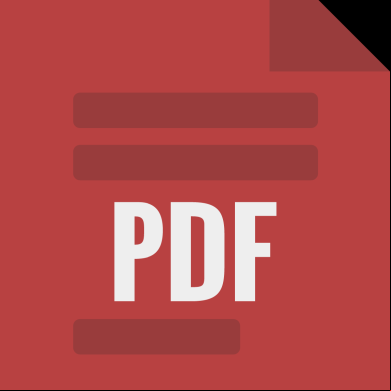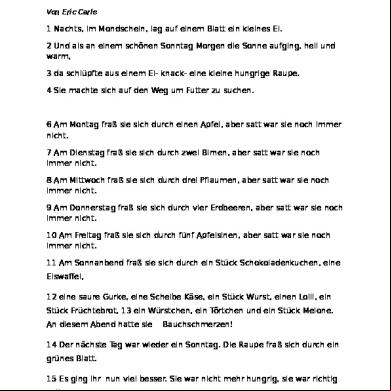Campbell Biology Chap 1 y36n
This document was ed by and they confirmed that they have the permission to share it. If you are author or own the copyright of this book, please report to us by using this report form. Report 2z6p3t
Overview 5o1f4z
& View Campbell Biology Chap 1 as PDF for free.
More details 6z3438
- Words: 463
- Pages: 10
Chapter 1
• General Biology, Bio 105 • Campbell, 10th Ed.
1
3
4
Core theme of biology: Evolution
7 properties of Life
• s for – adaptation – unity & diversity of Life
5
Growth & differentiation
10 levels of biological organization
6
7
Emergent Properties at each new level or organization
8
9
Structure & Function
Cell: Life’s basic unit
10
11
12
13
2 Major Categories of Cells
Cells: Gene expression, transmission
14
15
Chromosomes, Genes • Human Genome Project – https://www.genome.gov/10001772/all-about-the--human-genome-project-hgp/ – https://www.genome.gov/12011238/an-overview-of-the-human-genome-project/
Haploid , n
• Completed 2003 • # human protein-coding genes? – http://www.thescientist.com/?articles.view/articleNo/40441/title/Human-Gene-SetShrinks-Again/
Diploid , 2n
16
17
19
DNA double helix structure
DNA: the genetic material
• Strands • Backbone • Nitrogenous bases – importance of base sequences – Complementary base pairing
18
20
Gene expression • Protein amino acid sequence determines folding (structure) • Structure determines function
Biological systems are subject to homeostatic regulation • Negative FB – reversal of an original condition
• Positive – cascade accentuation of an original condition (more, more, more....) • labor and childbirth • blood clotting • allergic responses
21
Life uses Energy
22
Biological Interactions: ecosystem
23
• Energy cycling in the ecosystem • the Producers – photosynthetic organisms
• the Consumers • the decomposers (recyclers)
Biological interactions: organism
24
Biology
• regulation – Negative FB: reversal or original stimulus – Positive FB: accentuation of original stimulus; e.g.,
• historically, the classification of Life – Taxonomy
• Cascades (blood clotting)
25
Linnean system of classification: binomial nomenclature
Classification system
Carl Linnaeus, 1707-1778
• Latinized names for Genus & species – Homo sapien (human) – Panthera leo (lion)
• NOTE – Genus is capitalized • may be abbreviated
– Species begins with small letter – Latin name is italics if typed or underlined (if handwritten) 26
27
Three Domains of Life
the Probiotics, Pathogens
the Extremophiles
some are photosynthetic 28
29
31
Eukaryotes (4 groups) • Very diverse group – multicellular, unicellular – photosynthetic, nonphotosynthetic
30
32
• photosynthetic multicellular ‘producers’
33
• multicellular decomposers
34
35
Unity across Life’s Diversity • e.g, cilia for movement in
• multicellular Consumers (ingesters)
– Protist – Animal
an ‘animal-like’ Protist, called a (protozoan)
Charles Darwin and the Theory of Natural Selection
• Fossils and other evidence document the evolution of life on Earth over billions of years
36
Charles Darwin's The Origin of Species (1859): Theory of Evolution developed to explain both the Unity & Diversity of Lifeforms
37
1. species show “descent with modification” from common ancestors 2. “natural selection” is the mechanism of modification • ‘inheritable units’ (before DNA was known)
38
Darwin’s Galapagos Island Finches • Descent with modification •
39
Archipelago off Ecuador
Inherited traits that favor reproductive success
• Adaptive radiation
40
• General Biology, Bio 105 • Campbell, 10th Ed.
1
3
4
Core theme of biology: Evolution
7 properties of Life
• s for – adaptation – unity & diversity of Life
5
Growth & differentiation
10 levels of biological organization
6
7
Emergent Properties at each new level or organization
8
9
Structure & Function
Cell: Life’s basic unit
10
11
12
13
2 Major Categories of Cells
Cells: Gene expression, transmission
14
15
Chromosomes, Genes • Human Genome Project – https://www.genome.gov/10001772/all-about-the--human-genome-project-hgp/ – https://www.genome.gov/12011238/an-overview-of-the-human-genome-project/
Haploid , n
• Completed 2003 • # human protein-coding genes? – http://www.thescientist.com/?articles.view/articleNo/40441/title/Human-Gene-SetShrinks-Again/
Diploid , 2n
16
17
19
DNA double helix structure
DNA: the genetic material
• Strands • Backbone • Nitrogenous bases – importance of base sequences – Complementary base pairing
18
20
Gene expression • Protein amino acid sequence determines folding (structure) • Structure determines function
Biological systems are subject to homeostatic regulation • Negative FB – reversal of an original condition
• Positive – cascade accentuation of an original condition (more, more, more....) • labor and childbirth • blood clotting • allergic responses
21
Life uses Energy
22
Biological Interactions: ecosystem
23
• Energy cycling in the ecosystem • the Producers – photosynthetic organisms
• the Consumers • the decomposers (recyclers)
Biological interactions: organism
24
Biology
• regulation – Negative FB: reversal or original stimulus – Positive FB: accentuation of original stimulus; e.g.,
• historically, the classification of Life – Taxonomy
• Cascades (blood clotting)
25
Linnean system of classification: binomial nomenclature
Classification system
Carl Linnaeus, 1707-1778
• Latinized names for Genus & species – Homo sapien (human) – Panthera leo (lion)
• NOTE – Genus is capitalized • may be abbreviated
– Species begins with small letter – Latin name is italics if typed or underlined (if handwritten) 26
27
Three Domains of Life
the Probiotics, Pathogens
the Extremophiles
some are photosynthetic 28
29
31
Eukaryotes (4 groups) • Very diverse group – multicellular, unicellular – photosynthetic, nonphotosynthetic
30
32
• photosynthetic multicellular ‘producers’
33
• multicellular decomposers
34
35
Unity across Life’s Diversity • e.g, cilia for movement in
• multicellular Consumers (ingesters)
– Protist – Animal
an ‘animal-like’ Protist, called a (protozoan)
Charles Darwin and the Theory of Natural Selection
• Fossils and other evidence document the evolution of life on Earth over billions of years
36
Charles Darwin's The Origin of Species (1859): Theory of Evolution developed to explain both the Unity & Diversity of Lifeforms
37
1. species show “descent with modification” from common ancestors 2. “natural selection” is the mechanism of modification • ‘inheritable units’ (before DNA was known)
38
Darwin’s Galapagos Island Finches • Descent with modification •
39
Archipelago off Ecuador
Inherited traits that favor reproductive success
• Adaptive radiation
40










